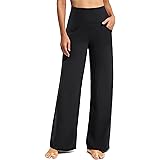Health Canada warns against using certain henna products as Eid approaches

Henna artists are calling for increased scrutiny of imported henna products they say are problematic and can cause injuries.
The call comes on the cusp of Eid, a celebration marking the end of Ramadan, and after Health Canada issued a warning about a specific brand late last month.
The brand, Shakeel Bhai Mehndi Waley, sold in red and yellow cone-shaped tubes the length of an iPhone, was the subject of the public advisory issued March 28.
Health Canada cautioned users to immediately stop using the product and dispose of them in household garbage. Some users reported skin irritations caused by an unlisted ingredient – phenol – which is prohibited in Canada.
“Products that contain phenol can be dangerous if they come in contact with the skin, as phenol can cause chemical burns, resulting in redness, blistering and burning or stinging pain,” Health Canada said.
The same brand has had previous recall notices dating back to 2017.
Edmonton AM8:14The art of henna
We’re approaching Eid, marking the end of Ramadan. It’s a time when many Muslim people use henna as part of cultural celebrations. Tooba Sheikh is a henna artist here in Edmonton.
Tooba Sheikh, an Edmonton henna artist, was glad to see the warning.
“That is a huge problem because a lot of people are getting a lot of reactions from the henna cones,” she told CBC’s Edmonton AM on Friday.
“We have been asking Health Canada to do something about these cones for a long, long time.”
Sheikh says enforcing this recall is another issue. Over the years, Sheikh has gone to stores warning them about the henna products they are carrying.
“Some people will take the product from the shelf. A lot of people would just ignore you,” she said.
She said Health Canada needs to regulate the henna industry more to prevent these products from being imported in the first place.
In the meantime, with festival season approaching where henna is also popular, she says it’s important to make consumers aware.
“It is really important that you be asking these questions, ‘Is it natural?’ ‘What did you put in it?’ and ‘Did you make it yourself?’,” she said.
‘Henna is like tea’
Natural henna is created by crushing dried henna leaves into powder and then creating a paste that is often olive green in colour.
Sheikh, who has been a henna artist professionally for seven years, uses natural henna she makes herself by mixing the powder with water and lavender essential oil.
She said the colour of henna depends on how long you leave the paste, transformed into intricate designs, on your skin.
“Henna is like tea. The more you steep or the more you leave it on the skin, the better the result or the darker the colour,” she said.
It can last anywhere from four days to two weeks, Sheikh said.
Black henna, also known as instant henna is black in colour and uses dyes and chemicals like phenol.
Black henna leaves a dark maroon or even black stain right away just like regular dye.
“That’s one thing that you should be asking whenever you’re getting henna done is, ‘Did you make it yourself?’,” Sheikh said.
Although not all artists make their own henna.
Ishita Sharma, another Edmonton henna artist, uses a specific brand of organic henna she used when she lived in India up until two years ago, and which is also available online here in Canada.
Since moving here, Sharma was introduced to the chemical-laced henna cones early on.
“I got it done at the Heritage Festival and it’s given me red rashes on my hands,” she said.
Since then she has stuck to the brands she trusts.
Muslims around Edmonton will celebrate Eid on Tuesday.
View original article here Source









